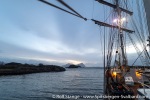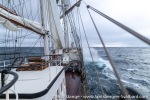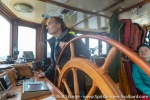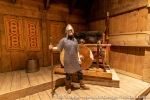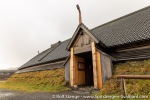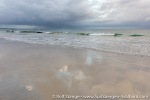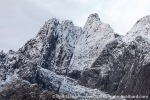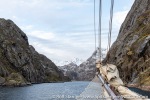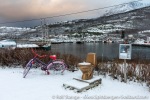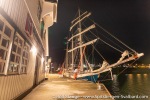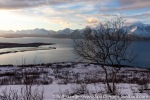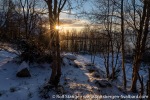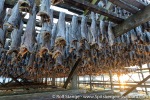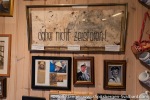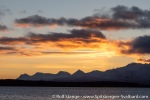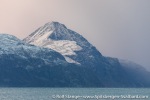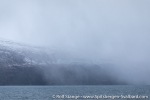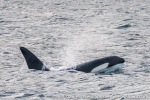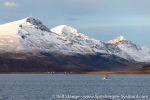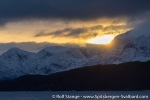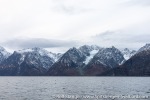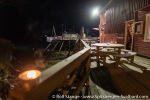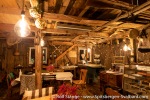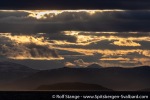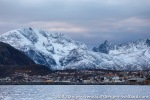-
current
recommendations- Liefdefjord
New page dedicated to one of Spitsbergen's most beautiful fjords. Background information and many photos.
- New Spitsbergen guidebook
The new edition of my Spitsbergen guidebook is out and available now!
- Liefdefjord
New page dedicated to one of Spitsbergen's most beautiful fjords. Background information and many photos.
Page Structure
-
Spitsbergen-News
- Select Month
- May 2025
- April 2025
- March 2025
- February 2025
- January 2025
- December 2024
- November 2024
- October 2024
- September 2024
- August 2024
- July 2024
- June 2024
- May 2024
- April 2024
- March 2024
- February 2024
- January 2024
- December 2023
- November 2023
- October 2023
- September 2023
- August 2023
- July 2023
- June 2023
- May 2023
- April 2023
- March 2023
- February 2023
- January 2023
- December 2022
- November 2022
- October 2022
- September 2022
- August 2022
- July 2022
- June 2022
- May 2022
- April 2022
- March 2022
- February 2022
- January 2022
- December 2021
- November 2021
- October 2021
- September 2021
- August 2021
- July 2021
- June 2021
- May 2021
- April 2021
- March 2021
- February 2021
- January 2021
- December 2020
- November 2020
- October 2020
- September 2020
- August 2020
- July 2020
- June 2020
- May 2020
- April 2020
- March 2020
- February 2020
- January 2020
- December 2019
- November 2019
- October 2019
- September 2019
- August 2019
- July 2019
- June 2019
- May 2019
- April 2019
- March 2019
- February 2019
- January 2019
- December 2018
- November 2018
- October 2018
- September 2018
- August 2018
- July 2018
- June 2018
- May 2018
- April 2018
- March 2018
- February 2018
- January 2018
- December 2017
- November 2017
- October 2017
- September 2017
- August 2017
- July 2017
- June 2017
- May 2017
- April 2017
- March 2017
- February 2017
- January 2017
- December 2016
- November 2016
- October 2016
- September 2016
- August 2016
- July 2016
- June 2016
- May 2016
- April 2016
- March 2016
- February 2016
- January 2016
- December 2015
- November 2015
- October 2015
- September 2015
- August 2015
- July 2015
- June 2015
- May 2015
- April 2015
- March 2015
- February 2015
- January 2015
- December 2014
- November 2014
- October 2014
- September 2014
- August 2014
- July 2014
- June 2014
- May 2014
- April 2014
- March 2014
- February 2014
- January 2014
- December 2013
- November 2013
- October 2013
- September 2013
- August 2013
- July 2013
- June 2013
- May 2013
- April 2013
- March 2013
- February 2013
- January 2013
- December 2012
- November 2012
- October 2012
- September 2012
- August 2012
- July 2012
- June 2012
- May 2012
- April 2012
- March 2012
- February 2012
- January 2012
- December 2011
- November 2011
- October 2011
- September 2011
- August 2011
- May 2011
- April 2011
- March 2011
- February 2011
- January 2011
- December 2010
- November 2010
- September 2010
- August 2010
- July 2010
- June 2010
- May 2010
- April 2010
- March 2010
- February 2010
- November 2009
- October 2009
- August 2009
- July 2009
- June 2009
- May 2009
- April 2009
- March 2009
- February 2009
- January 2009
- December 2008
- November 2008
- October 2008
- August 2008
- July 2008
- June 2008
- May 2008
- April 2008
- March 2008
- February 2008
- April 2000
- Select Month
-
weather information
-
Newsletter

| Guidebook: Spitsbergen-Svalbard |
Home →
Yearly Archives: 2021 − News & Stories
New positive Corona tests in Longyearbyen: probably Omikron
The SarsCov-2 virus keeps bothering the world, and this includes the Arctic. Omikron seems to have arrived in Longyearbyen. There were three positive Corona tests in Longyearbyen during the Christmas holidays, all of them concerning persons who had recently arrived from mainland Norway where Omikron is well established, so Knut Selmer, medical doctor and responsible for handling infectious diseases at the hospital in Longyearbyen, assumes that Omikron has come to Spitsbergen. In addition, there are several persons in quarantine and test results keep coming in, as Svalbardposten reports.

Corona has come to Spitsbergen, and this seems to include the Omikron variant.
Selmer expects this to be the beginning of a major wave of infections, just as elsewhere in the world. He does not think it is possible to keep Spitsbergen corona-free in the future, but considers it highly important to delay and flatten the curve. Everybody who arrives in Longyearbyen needs to get tested and Norway has recently tightened regulations concerning, amongst others, face masks. The aim in Longyearbyen is to keep school, kindergartens and other services especially for children and youth open as long as possible.
Longyearbyen has, at least, a very high vaccination rate. Near 700 persons got vaccinations in December, mostly booster injections, but also a couple of primary vaccinations. The next mass vaccination in Longyearbyen is scheduled for 11 January.
Immerhin hat Longyearbyen eine sehr hohe Impfquote. Im Dezember wurden rund 700 Personen geimpft, wobei es überwiegend um Auffrischungsimpfungen ging. Es gab aber auch einige Erstimpfungen. Die nächste, große Impfaktion in Spitzbergen ist am 11. Januar geplant.

In spite of Corona, even in spite of Omikron,
the sun will rise and shine again over Spitsbergen in 2022.
But it will take some time.
This is probably the last one of more than 100 blog and news entries on this website in 2021. I will, of course, continue in 2022. Thank you for reading, welcome back and happy new year!
“C” as in “corona”, or better: Christmas
Many had been thinking in Longyearbyen that Spitsbergen would remain a covid-free bubble, but it didn’t really surprise that this is not the case. A number of people have tested positive in Longyearbyen, including those that show symptoms – not dramatic ones, luckily, as far as known at least.
So now everybody who arrives in Longyearbyen needs to make a test upon arrival. The administration fears the consequences of a major outbreak in such a remote location.

Corona has come to Spitsbergen. And if you do the same, then you have to get tested upon arrival there.
Nobody knows what this might mean for the future, what 2022 may bring. Many in Longyearbyen (and elsewhere) feel unwell as soon as someone says “Omikron”.
Digital Spitsbergen museum: new and improved pages
So at the time being, a virtual journey may be the better option, and certainly the cheaper and easier one, available at any time. I have made a number of new pages within spitsbergen-svalbard.com and improved older ones, making it worthwhile to visit both well known and remote corners of the Svalbard archipelago. It is fair to say that what I am building up here over years is kind of a digital Spitsbergen museum, especially in the panorama section which makes many locations in Svalbard easily accessible to anyone with internet access worldwide. The new and improved pages are my Christmas present for all Spitsbergen enthusiasts who like a digital trip to some beautiful, but – in real life – hard-to-get-to places. Enjoy!
Some of the new/improved pages:

Some of the locations represented on spitsbergen-svalbard.com with new or improved pages:
Enjoy! Access via the links in the list below.
- Heleysund
- Ryke Yseøyane
- Chermsideøya: Nordkapp
- Depotodden: Oxford House
- Tokrossøya (the visit there was one of my personal highlights in 2021)
- Vibebukta (1)
- Vibebukta (2)
- Hamburgbukta
- Grumantbyen (with some new information)
- Nordre Russeøya
- Reliktbukta
- Andøyane
- Teodolitkollen
- Hermansenøya

Lighting up the Christmas tree in Longyearbyen. Before Covid-19 – a long, long time ago.
Happy Christmas and the best wishes for a happy and healthy new year!
Use of depth-recording echo sounders may be forbidden in the future
Currently Norwegian lawmakers appear to be producing one fantastic idea after the other. One of the potentially upcoming laws is aimed against saving water depth data. The Norwegian ministry of defence considers depth-recording echo sounders a potential threat to national security and wants to prohibit their use in Norwegian waters, as reported by NRK. Next to the 12 mile zone of mainland Norway, this is explicitely intended to include the corresponding territorial waters of Svalbard and Jan Mayen.
All modern ships have echo sounders installed to monitor the depth of the water under the ship, and fishing vessels routinely use echo sounders to locate fish. Simpler devices just show the current value, while more sophisticated ones – which are standard on many modern vessels – record and save the data. If a ship navigates repeatedly in a certain area, over time the data thus gathered will produce a rough chart of the sea bottom topography – a great advantage in poorly charted waters such as large parts of Svalbard, especially in the remoter areas. GPS tracks with depth information, automatically or manually recorded, are an important and frequently used navigational tool in these waters.

Navigation in uncharted waters, in this case near a glacier that has recently retreated. According to the charted, the ship is sailing inside the glacier (brown area). Careful use of echo sounders and recording depth for future use is common practice in such situations.
The Norwegian ministry of defence wants to have a law re-activated that prohibits saving high-resolution depth values in waters deeper than 30 metres. This author can only speculate that the reason is to make access to security-relevant areas more difficult and to keep military installations on the sea floor from being discovered.
According to the Spitsbergen Treaty, no country including Norway is allowed to have permanent military installations in Svalbard, hence introducing measures to protect such installations does not make sense. The Norwegian military, however, seems to consider the territorial waters of Svalbard generally so sensitive that they wish to include Svalbard, where large areas are poorly charted or not charted at all.
Fishers are raging because they see a risk of their daily routines being criminalised, with consequences potentially including high fines or up to a year in prison. According to the ministry of defence, the law is “in principle” not aimed against fishery and at least in theory their routines should not be affected – that is, at least, the intention. What the law actually says remains to be seen. The idea is rather to keep foreign, potentially unfriendly powers from systematically charting Norwegian waters.
Legal opinion: law proposals should be withdrawn
The ongoing discussion of the highly controversial legal proposals by the Norwegian government concerning Svalbard (the Spitsbergen archipelago) is fuelled by a legal opinion that, in essence, concludes that the proposals should be withdrawn. The legal opinion was drafted by a law office based in Longyearbyen on behalf of Aeco (Association of Arctic Expedition Cruise Operators, an inter-trade organisation), Visit Svalbard (tourism office and industry organisation in Longyearbyen) and Svalbard Næringsforening (trade and industry association in Longyearbyen) erstellt. Svalbardposten got a copy of the legal opinion and made the key points public.
This is what it is all about:
Controversial legal proposals (1): closing large parts of Svalbard
In essence, it is about a series of law proposals made by the previous Norwegian government. There is a new government in Oslo after parlamentiary elections in September.
The proposal which attracts most public attention and controversy also outside Svalbard and Norway is one that aims at practically closing large parts of the Svalbard archipelago for the public. The “public” that has at least sporadic access to these rather remote areas is mainly ship-based tourism during the summer season. This kind of traffic has for a long time already been strongly regulated (including, but not limited to, a ban on heavy oils on ships, limits on passenger numbers on board and ashore in most areas etc.). In addition to tourism, there is science and – on a much lower quantitative level – the local population and individual tourists, mainly those who come with their own yachts.
The law proposal is visibly aimed against ship-based tourism, but would hit all of these sectors. In principle, most of Svalbard’s land areas and coastlines are so far legally accessible for tourists, with the exception of a number of smaller areas, islands and locations, that are closed – seasonally or permanently – to the public because they are considered especially vulnerable. During the summer season, several hundred locations over most of the archipelago are visited by tourists; the main part of the traffic, however, takes place at a relatively limited number of well-known and realatively easily accessible locations. Many of the large number of remaining locations are more “exotic”, much less well known and much less regularly or actually only rarely visited. They are, nevertheless, important especially in the context of longer voyages which aim at experiencing the variety of Svalbard’s landscapes.
The relevant law proposal would drastically reduce the liberty of action in most parts of Svalbard. According to the proposal, landings shall only be permitted at altogether 42 locations in the protected areas, which include most of the archipelago. Due to wind, weather, ice and the presence of polar bears, it is very common that a given location is actually not available at a given point of time: in such cases, it has so far been common to move “around the corner” to another location which can be visited without problems or even risk. Flexibility is thus an integral part of the safety and quality concept of these voyages. The loss of flexibility would accordingly directly reduce the quality (and, potentially, safety) of the whole operation. Consider on top that, during peak season, several dozen ships would compete for a small number of sites that remains legally accessible, and you are left with almost next to nothing at all.
The following two maps may illustrate the loss of flexibility which the law proposal as it currently is would involve, looking at the example of Nordaustland. Similar maps could be drawn for almost any other part of Svalbard.

Landing sites on Nordaustland and neighbouring islands that have been visited by tourists in recent years (not complete).

Landing sites in the same area that would be legally accessible according to the current law proposal (complete).
If a legal measure as drastic as this one would actually be in accordance with the Spitsbergen Treaty, which in principal guarantees citizens and companies of signatory countries free access to the archipelago, is yet another question. But in order to get a proper answer, this question would probably have to be asked by the government of a treaty member other than Norway.
Controversial legal proposals (2): extended registration schemes for traffic
Another part of this law proposal aims at extened registration schemes and administration efforts for traffic outside the settlements.
Controversial legal proposals (3): distances to polar bears and walruses
Also a part of the law proposal that includes the above-mentioned points, this part is so central and important that it needs to be highlighted on its own, rather than getting lost at the end of a long text somewhere else: the law includes a legal minimum distance of 500 metres to polar bears in any situation and 300 metres to walruses at sea.
Especially a general minimum distance of 500 metres to polar bears would destroy the basis of a large part of the ship-based tourism industry in Svalbard: seeing polar bears is amongst the main reasons for many tourists who visit Svalbard, especially in the context of several-day-long trips on smaller ships (expedition ships). Polar bear observations within much shorter distances from ships or smaller boats (“tender boats”, often Zodiacs or similar boats) are more or less common routine on many of these trips and do not involve danger for humans or animals. Carried out properly and respectfully, such operations do usually not cause disturbance of wildlife; changes of behaviour that may occasionally occur are usually not relevant – unless one considers it principally unacceptable that a polar bear walks a few metres away – and lead to an immediate discontinuation of the operation or at least to a greater distance.
Approaching polar bears in a way that may involve danger for humans or animals or disturbance is already forbidden (but NOT approaching in general) according to the Svalbard environmental act that has been in force for a long time now. Hence, there is no legal deficit but possibly an enforcement deficit, something that would actually be hard to deny but at the same time a problem that will not be solved by stricter laws.
There is no data that suggest that disturbance caused by tourists really is a problem for polar bears in Svalbard. There is no doubt that annoying individual cases do happen where tourists with or without guide (or locals) behave in an inacceptable way in the presence of polar bears (or other wildlife, for that sake). But these cases are already covered by existing law; the problem is enforcing the law that is in force and not a need for new and stricter laws. And, again, there is no data suggesting that there is a systematic problem beyond individual cases.
Regarding walruses: a couple of years ago, the Norwegian Polar Institute carried out a project with automatic cameras placed at a number of walrus haulout sites to investigate the problems that traffic, especially tourist visits, might potentially cause. The conclusion was that there is no indication that tourist traffic poses a relevant problem.
These are the most important parts of the legal proposals that concern the interested public also outside Svalbard. But there is more:
Controversial legal proposals (4): qualification and certification of guides
Another proposal aims at the qualification and certification of guides. This has already been a matter of debate for a long time and hardly anyone will deny that there is need for action. A reasonable, practicable certification scheme would be welcomed by companies, relevant organisations (such as AECO or the Svalbard Guide Association) and many guides who consider themselves professionals. The current proposal, however, sets the threshold from zero up to a level that would be very hard to reach for most. The proposal demands a number of courses and certificates that would cost an individual, non-local guide (who would also have to pay travel and accommodatio costs) an estimated 10,000-20,000 Euro. The result might be a collapse of the industry as almost no guides have these certificates ready or would be able to produce them at more or less short notice. This includes experienced guides with many years or even decades of experience who would “only” have to formalise their knowledge and experience which they have been using as part of their daily routine for many years, but without having formalised these skills. Also many of these experienced professionals would – especially considering the whole legal situation and potential development – think twice if they actually want to go through the effort of formalising their existing skills and knowledge. A lot of precious knowledge might thus get lost.
Controversial legal proposals (5): deprival of communal voting rights from non-Norwegian citizens in Longyearbyen
And yet another fantastic idea that you have to bear in mind to have kind of a complete picture of the current political development is the stunning proposal to deny “foreigners” the vote to right locally in Longyearbyen (this is NOT about the national parlamentary elections, that is not an issue anyway for those who do not have Norwegian citizenship).
Legal criticism
The above-mentioned legal opinion considers mainly the part of the law proposals that is aimed at practically closing large parts of Svalbard, but also the part that concerns guide certification. The legal opinion leads to annihilating conclusions regarding both parts.
General criticism that concerns the whole package includes the fact the the local population and their political representatives, and others concerned such as industry associations and companies, have not been involved (comment for the sake of completeness: there is an ongoing public hearing where all associations, companies and individuals who want to can give their input, but many doubt that critical opinions will actually be considered and reflected by the ongoing process. The above-mentioned parties were not included at any earlier stage).
Key points of the legal opinions regarding the closure of large parts of Svalbard include:
- There is doubt if the legal foundation is sufficient for such drastic measures.
- Poor data and scientific basis for such strong restrictions.
- Consequences for areas and locations, including those who are to remain accessible, are not sufficiently considered.
- Important scientific input given by instutions such as NINA (Norwegian Institute for nature research. It is amongst NINA’s key tasks to support legal processes with scientific knowledge) and the Norwegian Polar Institute (dito) was not sufficienty considered. This concerns amongst others the required minimum distances to polar bears and walruses.
- Wrong application of the precautionary principle.
- Milder restrictions other than the strongest ones were appearently not considered.
- One-sided, negative presentation of tourism in Svalbard, especially cruise tourism, without good basis by data or scientific input.
Also the legal proposal that concerns amongst others certification schemes for guides does get some substantial criticism:
- Consequences for the industry were not sufficiently considered, for example costs estimated between 10,000 and 20,000 Euro for non-local guides.
- Limited capacities and existing competence were not sufficiently considered.
- Administrative consequences were not sufficiently considered: how much additional effort would an enlargened registration and admininistration scheme for traffic involve? How many additional administrative positions, time and costs have to be expected?
- Consequences for the local population and community were not sufficienty considered, for example the consequences for the attractivity of Longyearbyen as a place to live. Many people in Longyearbyen are professionally directly or indirectly connected to tourism.
Conclusion
The conclusion of the legal opinion is clear: the law proposals should be withdrawn and drafted again from scratch, with a new definition of the aims that are actually to be achieved and a new consideration of the legal basis and scientific input.
On the other hand, optimism amongst those who are concerned that relevant authorities are willing to listen to opinions other than their own ones is rather limited, to put it mildly. Withdrawing a proposal that is public at least indirectly implies a confession that something was not right from the start, something that authorities are usually not really good at.
On the other hand, as it is said in the Norwegian mountain rules: it is never too late to turn around.
click here to access a page of the Norwegian environmental authority (“Miljødirektorat”) with further documents, including (a bit further down on the page) English translations of the English originals. There is also a link to the page with the hearing procedure, which is open until 01 May 2022.
Two dead polar bears in early 2020: criticism and investigations
In early 2020, two polar bears died under the hands of Norwegian authorities within just a few weeks: one was shot in the early morning hours of 01 January by the police (Sysselmester; then Sysselmannen) several kilometres away from town, although it was not an emergency situation. According to an official press release, anaesthetization and transportation to a remoter area were not available because relevant personell was not available because of the Christmas holidays (click here to read more about this case).
Only a few weeks later, on 30 January, another polar bear died during helicopter transport after anaesthetization (click here and here to read more about this case).
It does not surprise that both cases were met with a lot of public criticism. Norwegian authorities looked into the case, especially the second one, and came to the conclusion that there was not enough competence present to handle the procedure of anaesthetizing a polar bear in this given case and that the procedures were generally not good enough. There was, for example, no vet present when the polar bear was anaesthetized although vets were present in Longyearbyen and could have been called to assist on short notice (click here to read more about official investigations and criticism of this case).

Preparation of an anaesthetized polar bear near Longyearbyen (2016).
In addition, the Norwegian Bureau for the Investigation of Police Affairs (“Spesialenheten for politisaker”) started official investigations later in 2020. Both Sysselmannen (governor and police; today known as Sysselmester) and the Norwegian Polar Institute, an authority directly involved in such cases to provide advice and actually carry out relevant parts of the handling, were suspect of negligence.
In the end, a report was published recently, concluding that the criminal investigation was closed because there was no evidence for criminally liable behaviour. But the report mentions relevant mistakes and inadequate routines and commits the Sysselmester to improve the routines.
It is remarkable that the Norwegian Bureau for the Investigation of Police Affairs actually took up the case, and the result is, at best, a second-class verdict of not guilty. Definitely anything but a compliment for Sysselmester and Norwegian Polar Institute, the authorities who are officially deciding on and handling polar bears in relevant cases. It can be assumed that both polar bears might still be alive given proper handling of those cases.
So far, Norwegian policy and practical handling from official side don’t seem to know more options in such cases than scaring polar bears away with cars, snow mobiles or helicopters – a practice about which critics say that it actually teaches polar bears who don’t run away immediately that it is not dangerous to be in the vicinity of people and loud vehicles – and then, anaesthetization and transport or a deadly bullet. Non-lethal deterrents such as pepper spray or pepper projectiles or rubber bullets, which may make it very clear to a bear that being in the vicinity of people isn’t a good thing without actually injuring or even killing the animal, are not (yet?) part of the toolbox that those who handle these cases on official behalf seem to have considered a lot. It appears that there is still a lesson to be learnt and room for improvement.
The “arctic Wednesday” continued
The “arctic Wednesday” is about to continue soon! Birgit Lutz and I have scheduled 6 dates and themes for our the continuation of our popular series of online presentations in December 2021 and January 2022. No lesser than the famous adventurer Arved Fuchs will open the new series with his presentation “Shackleton 2000”, his narration of his adventures in Ernest Shackleton’s footsteps!
The presentations will be held in German.
- 01.12.: Arved Fuchs, “Shackleton 2000”
- 08.12.: Rolf Stange, “Norwegens arktischer Norden: Spitzbergen”
- 15.12.: Birgit Lutz, “Auf Skiern zum Nordpol”
- 20.12. (a Monday, just for the difference): Birgit Lutz & Rolf Stange with “Weihnachten im Eis”
- 12.01.2022: Birgit Lutz with “Heute gehen wir Wale fangen”
- 19.01.2022: Rolf Stange with “Das Licht des Nordens”
Please refer to my online shop for further information and booking. We hope to see you soon during the “arctic Wednesday” presentations!

Birgit Lutz and Rolf Stange are looking forward to the third series of the “arctic Wednesday”.
Protest against government politics: torchlight procession in Longyearbyen
The Svalbard policy of the government in Oslo currently frustrates a lot of people, both Spitsbergen locals, Longyearbyen politicians and concerned industry sectors. Epicentres of the current frustration are the potential closing of large parts of the Spitsbergen archipelago and the threatening withdrawal of the right to vote on a community level (! not national) for non-Norwegian citizens living in Longyearbyen (see linked articles for further details on these issues).
These proposals have both been made by the government in Oslo. As of now, final decisions have not been made yet.
And both proposals were made by the Norwegian government without involving local politicians or the people living in Spitsbergen or industries working there. There is the public hearing, but that is quite late in the day to involve the local council. And based on experience from recent hearings, trust that the input given into such processes will actually be heard is rather limited, to put it mildly.

Longyearbyen: many people living here are currently shocked about political proposals coming from Oslo. If the sun is politically going up or down over this beautiful place is a question that remains to be answered by national politicians soon.
Many people who live in Longyearbyen or who otherwise have a strong connection to Svalbard are now fed up with this way to rule the place. The is “NOK er NOK” (“enough is enough”). Local groups and organisations have now called on the local public to join a torchlight procession today (Tuesday, 16 november) in Longyearbyen. Politicians, locals, organisations and companies in and connected with Longyearbyen and Svalbard want to be heard and involved when it comes to decisions that may well decide over their future. The demand is that both political proposals, regarding both the closing of large parts of the archipelago and the idea to deprive non-Norwegian locals of their voting rights, disappear from the political agenda in Oslo.
Organisations that called on the public to join their protest include Svalbard næringsforening (an organisation of local industries and companies), AECO (an organisation representing the expedition cruise operators), Longyearbyen jeger- og fiskerforening (club of local hunters and fishers), To-takteren (club for snow mobile and boat enthusiasts), Svalbard Turn (local sports club with a large number of outdoor enthusiasts amongst the members) and the Svalbard Guide Association. Altogether, these organisations represent an impressive number of people in Longyearbyen, but also elsewhere.
Due to the weather, today’s protest may turn out to be a headlamp procession rather than a torchlight processions.

Today’s torchlight procession in Longyearbyen. Photo © Franka Leiterer.
Vestfjord
Sun
14 Nov
2021
Vestfjord, this large, half-open stretch of water between Lofoten and the Norwegian mainland, can be a bit of a bastard. I remember definitely more headwinds and unpleasant waves during the many crossings of Vestfjord than fair sailing winds. Also this time it was a bumpy road from Kabelvåg to Bodø. But well, that’s life, we’ve gotta take it as it comes. Weather.
In Bodø, this voyage came to an end, and hence my northern season in this slightly mixed year 2021. It brought less time in the Arctic than I had originally been hoping for but more than feared at some stage.
It was a beautiful and good, certainly including this final voyage on SV Antigua. Great thanks to everybody who was part of this time! First of all Captain Serge and his good crew – I am looking forward to seeing you again next year up north (or elsewhere, for that sake)! Meanwhile, safe and happy sailing!
This is the last travel blog entry for this year. If you want to continue enjoying the beauty and fascination of the Arctic also in December and January, then join Birgit Lutz and my during our online presentation series “Der arktische Mittwoch” (German) 🙂
- gallery anchor link: #gallery_2154
Click on thumbnail to open an enlarged version of the specific photo.
Lofoten: Viking museum Borg
Sat
13 Nov
2021
Considering the weather, this was definitely the perfect day for a visit to the Lofotr Viking museum in Borg on the Lofoten island of Vestvågøy. Considering the wind, a bus ride was certainly better than a ship voyage today, and looking at the rain, a bus ride was certainly better than hiking today … so that worked well 🙂
The Lofotr Viking museum is really interesting, including a beautiful reconstruction of a 83 m long chieftain’s house. We were lucky to get a guided tour by Christian, a true viking and as powerfully eloquent as corona proof. Altogether it was almost tempting to try viking life here for a while … well, almost, I quite like living in our modern times and I wouldn’t exchange it for a probably much shorter and definitely much harder life in the 8th or 9th century.
And it was not “only” the museum. My personal highlight was the sighting of an adult male elk near the road on Vestvågøy – the traffic situation didn’t allow us to stop, unfortunately – and then we did several stops to enjoy the Lofoten scenery on the way back on Vestvågøy, Gimsøy and Austvågøy. Beautiful landscapes, especially as the clouds kindly kept their water during those moments.
In the end, we still had time for a visit in the famous Lofoten aquarium in Kabelvåg.
- gallery anchor link: #gallery_2151
Click on thumbnail to open an enlarged version of the specific photo.
Trollfjord & Kabelvåg
Fri
12 Nov
2021
Trollfjord is widely famous for its stunning scenery and sea eagles (they live anywhere in the wide region up here, but Trollfjord is definitely a good place to see them). We were there in the right time to see the wonderful landscape in its full beauty.
The same applies to the sea eagles. We got to see an amazing number of them. That was, to some degree, coincidence, but not an entirely natural one: while we were playing in Trollfjord, a smaller motor boat came in with tourists, probably from Svolvær, and started putting out pieces of fish. The sea eagles clearly knew the ritual, as they came down even before that boat had actually stopped! Dirty trick, possibly, but it works quite obviously well.
A few hours later we went alongside in Kabelvåg, the historical centre of the Lofoten islands. We went to have a good look around in weather that was getting increasingly less enjoyable. The forecast promises rather unpleasant conditions for the days to come.
- gallery anchor link: #gallery_2148
Click on thumbnail to open an enlarged version of the specific photo.
Skrolsvik & Harstad
Fri
12 Nov
2021
The little harbour of Skrolsvik on the southeastern point of the lovely island of Senja lies somewhat deserted between the sea, some small islands and mountains with great hiking routes.
In certain earlier times, the strategical position attracted „visitors“ with pronouncedly less peaceful intentions. During the occupation in the war years from 1940, the German Wehrmacht built a coastal fortification here to control the northern shipping route to the important port of Narvik. It is, again and again, incredible how much effort people put into things that are just made to destroy other things. The guns, later kept by the Norwegian military for many years, are now slowly rusting away, and the bunkers are more and more weathering and covered by vegetation.
Later we made a stop in Harstad, a centre of civilisation on Hinnøya in Vesterålen.
- gallery anchor link: #gallery_2145
Click on thumbnail to open an enlarged version of the specific photo.
Hamnes & Lyngenfjord
Sun
7 Nov
2021
On Saturday evening we arrived in Hamnes just in time to see a most amazing northern light. A green spiral with some purple edges was dancing in rapid movements over the sky. Stunning!
And so was the following day. A golden morning in Hamnes on the island of Uløya. Hiking options are virtually endless – as far as you can walk or as time allows.
Cruising out of Lyngenfjord was just as impressive and beautiful. The weather changed rapidly from golden sunlight to dark grey snow squalls with a hint of purple. Amazing and quickly changing light conditions in front of the scenic background of the Lyngen Alps.
- gallery anchor link: #gallery_2142
Click on thumbnail to open an enlarged version of the specific photo.
With Antigua from Tromsø to Bodø: Kvænangen
Sun
7 Nov
2021
Back on the waves again with good old Antigua! We have one week ahead of us, searching for beautiful impressions and experiences in north Norway on the way from Tromsø to Bodø.
Kvænangen is actually not really on this way, but we have got enough time for some extra miles. The weather is fine, we know that the whales are there, so we set course to the northeast.
And this turned out to be a good decision 🙂
- gallery anchor link: #gallery_2139
Click on thumbnail to open an enlarged version of the specific photo.
Finnkroken
Fri
5 Nov
2021
The (almost) last evening, the last day. Finnkroken on the island of Reinøya. An old trading place, now kind of a museum, campfire atmosphere in a lavu, a holy place of the Sami people, wide views over fjell and fjord.
A last couple of hours sailing time take us to Tromsø, where this trip comes to an end. It was a good one, thank you all very much! Save travels back home or good onward journey, and see you next time! 🙂
As far as I am concerned, I have the shortest move ever. From Cape Race to Antigua. Both ships are lying alongside each other. We will take off again tonight!
- gallery anchor link: #gallery_2136
Click on thumbnail to open an enlarged version of the specific photo.
Kvænangen: Orcas & Skjervøy
Tue
2 Nov
2021
Kvænangen has given us plenty of beauty the last couple of days. But we had not yet seen much of the famous orcas, other than a very brief and distant sighting two days ago. Maybe today? This would be our third and last attempt. It is not that everything comes easily and for free in the the far north. Well, the two previous whalewatching excursions had been beautiful – with humpback and fin whales – but we were still hoping for orcas.
And we did see them today. What an incredible morning!
Later we went and had a look at Skjervøy, the metropolis of the Kvænangen area. The first harbour where the Fram came back to civilisation in 1896 after her famous drift across the Arctic Ocean. Good to stretch legs a bit!
- gallery anchor link: #gallery_2133
Click on thumbnail to open an enlarged version of the specific photo.
News-Listing live generated at 2025/May/02 at 17:45:52 Uhr (GMT+1)
